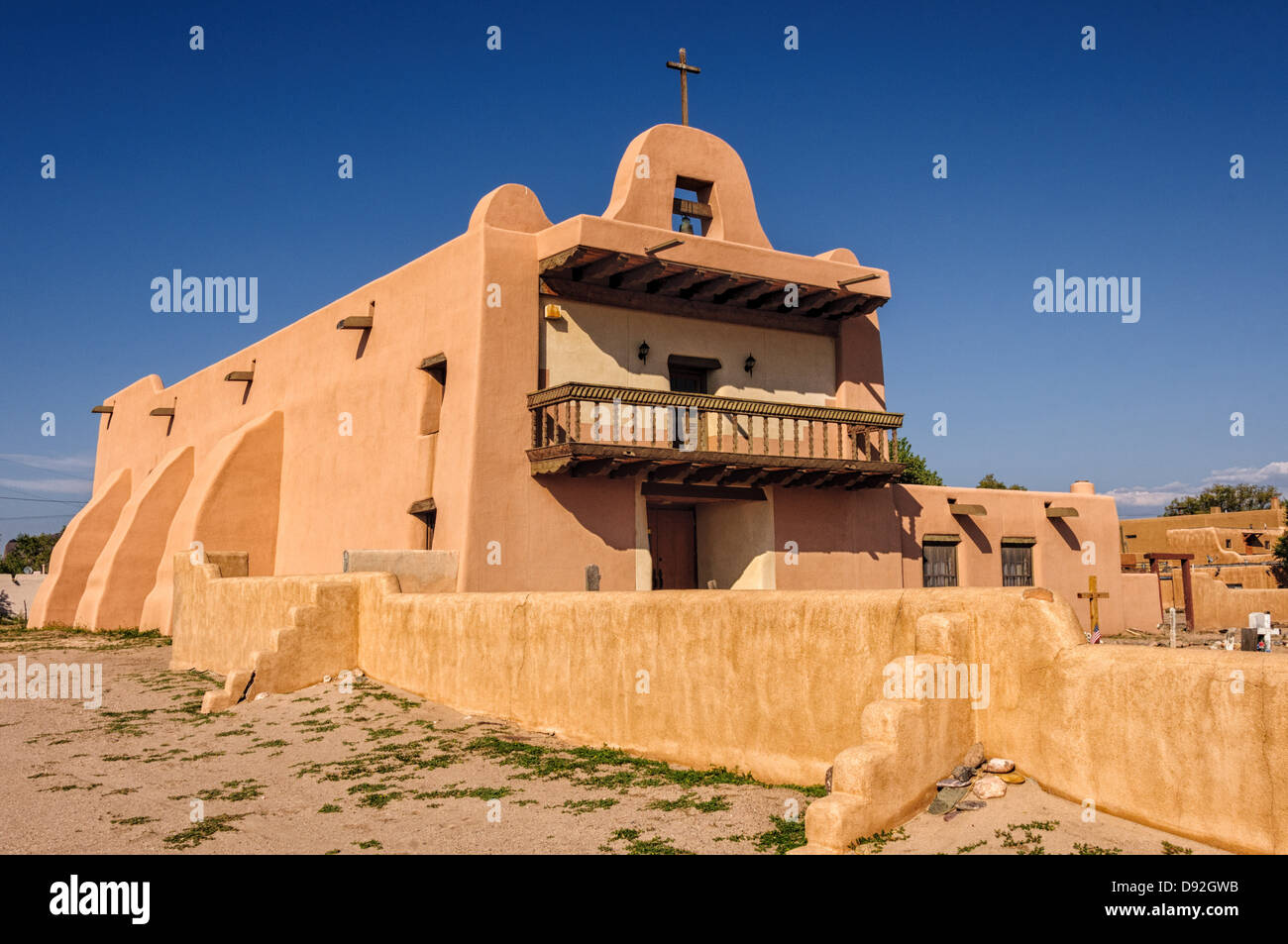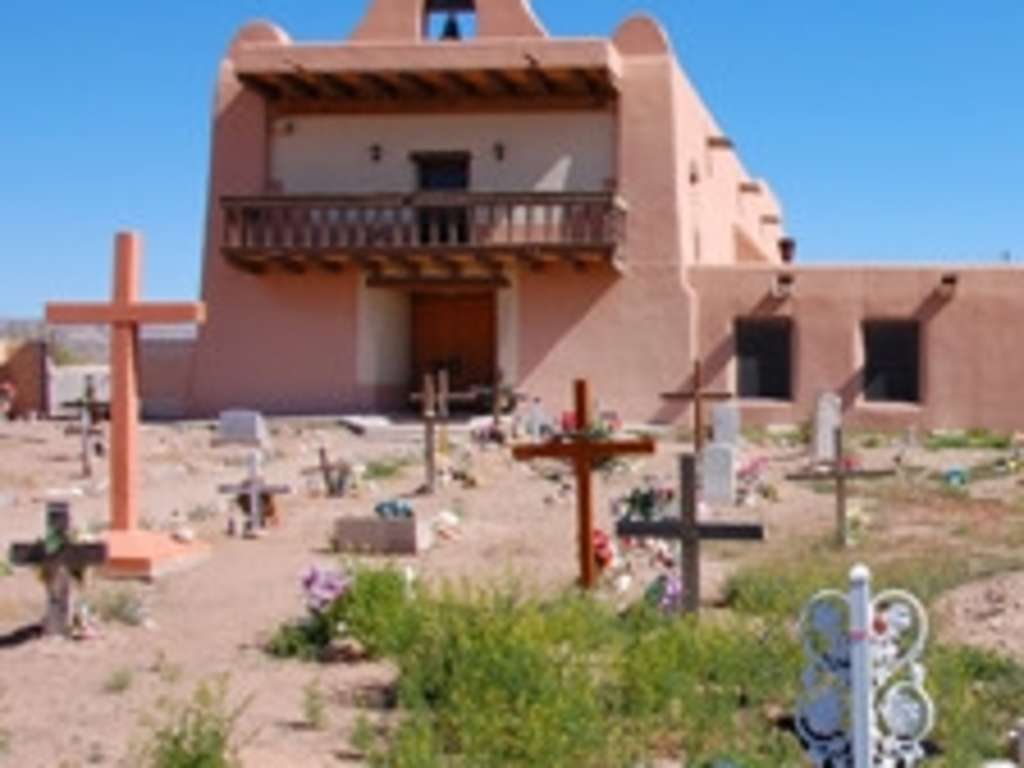
Okay, here is a 1200-word journalistic article about San Ildefonso Pueblo, New Mexico, incorporating interesting facts and quotes.
Echoes in the Clay: San Ildefonso Pueblo, A Timeless Sentinel in New Mexico
In the high desert plains of northern New Mexico, where the Sangre de Cristo Mountains cast long, purple shadows and the Rio Grande carves its ancient path, lies a place steeped in millennia of human history and vibrant cultural resilience: San Ildefonso Pueblo. More than just a dot on the map, this sovereign nation is a living testament to the enduring spirit of the Tewa people, a community that has navigated centuries of change – from Spanish conquest to the dawn of the atomic age – while holding fast to its language, traditions, and the profound artistry that defines it.

Stepping onto the historic plaza of San Ildefonso, one feels an immediate sense of gravity and timelessness. The adobe buildings, sun-baked and weathered, seem to breathe the stories of generations. The air itself carries whispers of ancient dances, the murmur of the Tewa language, and the soft scrape of a potter’s tool against clay. This is a place where the past is not merely remembered, but actively lived, breathed, and re-created daily.
A History Forged in Resilience
The Tewa people, ancestors of today’s San Ildefonso residents, have inhabited this fertile valley for well over a thousand years, drawn by the life-giving waters of the Rio Grande and its tributaries. Their ancestors built sophisticated villages, cultivated crops, and developed a rich spiritual and social structure long before European contact. The arrival of the Spanish in the late 16th century brought profound changes, including the imposition of a new religion, language, and governance. Yet, the Tewa people of San Ildefonso, like their Pueblo neighbors, demonstrated remarkable adaptability and fierce cultural preservation.
They participated in the Pueblo Revolt of 1680, a successful, though temporary, uprising that expelled the Spanish for twelve years, underscoring their determination to maintain their sovereignty and way of life. Over subsequent centuries, they carefully integrated elements of the outside world while fiercely guarding the core of their identity, ensuring that traditional ceremonies, language, and communal values persisted.
The Alchemy of Earth and Fire: The Legacy of Maria Martinez
To speak of San Ildefonso Pueblo is to speak, almost immediately, of pottery. And to speak of pottery from San Ildefonso is to inevitably speak of Maria Martinez. Born Maria Poveka Montoya in 1887, she became one of the most celebrated and influential Native American artists of the 20th century, elevating pueblo pottery from a utilitarian craft to a globally recognized art form.
Maria, along with her husband Julian Martinez, revolutionized the art world with their distinctive "black-on-black" pottery. This technique, while having ancient roots in the region, was refined and perfected by the Martinezes, bringing it to an unprecedented level of artistry and fame. The process is an alchemy of earth and fire: clay is gathered locally, painstakingly cleaned and sifted, then hand-coiled into elegant shapes. After an initial firing, the pots are polished to a high sheen using a smooth river stone. Julian would then paint intricate, matte designs – typically featuring traditional Pueblo symbols like the feather, avanyu (water serpent), or abstract geometric patterns – onto the highly polished surface using a special slip. The magic happens during the second firing: by smothering the fire with dried manure, oxygen is deprived, causing the carbon to be absorbed by the clay, turning the pot a lustrous, deep black, with the painted areas remaining a duller, matte black. The contrast is subtle, elegant, and instantly recognizable.
Elena Peña, a third-generation potter from San Ildefonso and a descendant of Maria Martinez, reflects on her great-grandmother’s impact: "Maria’s hands didn’t just shape clay; they shaped our future. She showed the world the beauty and power of our traditions, creating economic opportunities and inspiring countless others to continue our artistic legacy. Her work was a bridge between our ancient ways and the modern world, a silent language spoken through the earth."

Maria Martinez’s dedication and artistry brought international recognition to San Ildefonso, drawing collectors, anthropologists, and tourists to the pueblo. Her innovations not only revitalized the pottery tradition but also provided a vital economic lifeline for the community during challenging times. Today, her legacy lives on through numerous descendants who continue to create exquisite pottery, each piece a testament to the enduring power of San Ildefonso’s artistic spirit.
Cultural Threads: Language, Ceremony, and Community
While pottery is the most visible expression of San Ildefonso’s culture to the outside world, it is but one thread in a rich, vibrant tapestry. The Tewa language, though facing the same pressures as many indigenous languages globally, remains a vital part of communal life, spoken by elders and taught to younger generations. It is the language of their ancestors, carrying nuances of thought, history, and spiritual understanding that cannot be fully translated.
Ceremonial dances, often performed in the central plaza, are deeply sacred and integral to the spiritual well-being of the community. These dances, which are largely private and not for public viewing, connect the people to the earth, the cosmos, and their ancestors, expressing gratitude for blessings and prayers for the future. The annual San Ildefonso Feast Day, celebrated on September 6th, is a significant public event where the community honors its patron saint with traditional dances, food, and celebration, offering a glimpse into the pueblo’s vibrant cultural life.
Community and kinship are the bedrock of San Ildefonso society. Decisions are made communally, leadership rotates annually, and the welfare of the group often takes precedence over individual desires. This strong communal bond has been key to their survival and cultural continuity.
A Shadow and a Legacy: Proximity to the Atomic Age
One of the most compelling and starkly contrasting aspects of San Ildefonso Pueblo’s modern history is its close proximity to Los Alamos, the birthplace of the atomic bomb. Just a short drive up the winding roads of the Pajarito Plateau, the scientific city emerged almost overnight during World War II, bringing a sudden influx of scientists, engineers, and workers to a secluded, historically significant landscape.
For San Ildefonso, the Manhattan Project presented a complex duality. On one hand, it offered unprecedented economic opportunities. Many Pueblo men and women found employment at Los Alamos, providing a much-needed source of income. On the other hand, it brought significant cultural disruption, environmental concerns, and a profound sense of irony. The land where ancient ancestors had sought spiritual solace and gathered resources was now the site of humanity’s most destructive invention. The juxtaposition of timeless tradition and the dawn of a terrifying new scientific age played out daily on the landscape surrounding the pueblo.
Governor Raymond Ortiz of San Ildefonso Pueblo, in a hypothetical statement, might articulate this tension: "Our people have always lived in harmony with the land. To see it transformed, to witness the power that was unleashed so close to our sacred sites, was a profound experience. We welcomed the jobs, yes, but we also understood the immense responsibility that came with it. It reminds us daily of the need for balance, for respecting the earth, and for the wisdom of our traditions in a world grappling with such immense power."
The legacy of Los Alamos continues to shape San Ildefonso, influencing discussions about land use, environmental stewardship, and the complex relationship between traditional knowledge and modern science.
Navigating the Modern World: Challenges and Continuity
Today, San Ildefonso Pueblo, like many indigenous communities, faces the ongoing challenge of navigating the complexities of the modern world while preserving its distinct identity. Issues such as economic development, youth engagement, and the protection of ancestral lands and water rights are central to their future. The pueblo actively manages tourism, seeking to educate visitors about their culture while maintaining respect for their privacy and sacred practices.
Efforts are continually underway to ensure the Tewa language is passed down, to encourage young people to learn traditional crafts like pottery and weaving, and to participate in ceremonial life. The goal is not to live in the past, but to draw strength and wisdom from it, creating a vibrant present and a resilient future.
San Ildefonso Pueblo stands as a powerful symbol of endurance, artistry, and cultural pride. It is a place where the earth itself seems to sing with the voices of ancestors, where the meticulous crafting of a black-on-black pot tells a story of survival and beauty, and where a community continues to chart its own course, guided by the timeless wisdom of its traditions. It is a place that invites respectful reflection, reminding us that true wealth often lies not in material possessions, but in the enduring spirit of a people and the rich tapestry of their heritage. In the quiet elegance of its pottery and the unwavering strength of its people, San Ildefonso Pueblo continues to echo its ancient song into the modern world.


